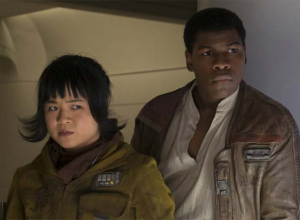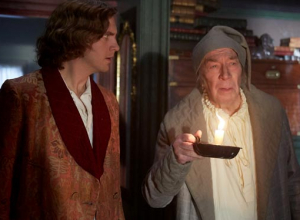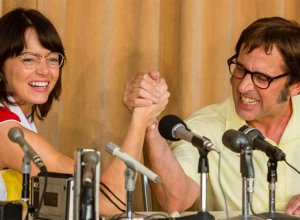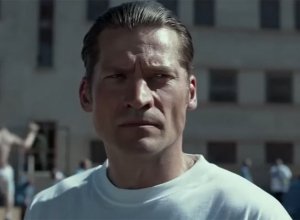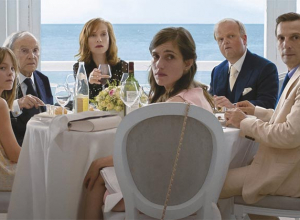A Hole In One Review
By Nicholas Schager
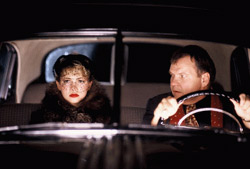
Anna (Michelle Williams) is the vacuous, borderline-underage girlfriend of mobster Billy (Meat Loaf), and the deleterious effect of watching her criminal lover murder a restaurateur (Louis Zorich) - coupled with the recent death of her G.I. brother Dan (Wendell Pierce), who perished after post-WWII electro-shock treatments administered at the request of their nasty parents - has left the girl a psychological mess. Fortunately, frightening Dr. Harold Ashton (Bill Raymond) has just arrived in town promoting a newfangled cure-all that strikes Anna's easily swayed fancy: the transorbital lobotomy, which the neurologist claims will eradicate everything from anxiety and insomnia to alcoholism. The "ice-pick lobotomy" - a popular procedure apparently based on historical fact, and so nicknamed because of the primary instrument used - is immediately appealing to Anna, who sees it as the easiest method of coping with her traumatic life. Will she go through with the dangerous operation, thus choosing to forget, rather than confront, her painful memories? Will the town's new resident Tom (Tim Guinee), an honest Korean War vet being blackmailed by Billy, succeed in convincing Anna that lobotomies are a less-than-reasonable therapeutic solution to one's problems? Will Ledes create something coherent out of his symbolism-saturated story?
The answer to that last question, regrettably, is: not really. The lobotomize-me craze is meant to represent Americans' eager appetite for easy remedies like the kitchen gadgets hawked by infomercial king Ron Popeil, the weight-loss pills promising to miraculously eliminate extra pounds, and the anti-depressants and sexual enhancers that doctors profusely prescribe. It's a topic worthy of serious consideration, and Ledes' film can't be faulted for flippancy; A Hole in One is, if nothing else, the work of a serious director valiantly attempting an allegorical socio-political portrait of ordinary people's fears and desires. Unfortunately, like its title - a reference to both the lobotomy's literal application (in which the surgical instrument penetrates the orbital cavity) as well as its supposed ability to repair one's every ailment in a swift, single shot - the film is groaningly affected. Luxuriously shot by Stephen Kazmierski in murky noir blacks and faux-cheery primary colors, Ledes' fractured fairy tale is tonally repetitive and, as it progresses into its tedious third act, unpleasantly stilted. Partly to blame is the cast, from Williams and Guinee's pretty blankness (an intentional but nonetheless monotonous posture that undermines the film's romantic core) to the off-key performance of Aday, whose portrayal of the psychotic Billy is as unpleasant as listening to nails on a chalkboard. Yet Ledes' debut ultimately stumbles thanks to a combination of bizarre image overload and slack storytelling. "To pursue forgetfulness is to pursue happiness," says Dr. Ashton, and with regards to this intriguing misfire, he's hit the nail right on the head.
We call it a bogey.

Facts and Figures
Year: 2004
Run time: 97 mins
In Theaters: Sunday 2nd May 2004
Distributed by: Wellspring Media Inc.
Production compaines: Beech Hill Films
Reviews
Contactmusic.com: 2.5 / 5
Rotten Tomatoes: 17%
Fresh: 2 Rotten: 10
IMDB: 5.4 / 10
Cast & Crew
Director: Richard Ledes
Producer: Alexa L. Fogel, Joseph Infantolino
Screenwriter: Richard Ledes
Also starring: Mark Day, Gerry Mendicino, Joseph Infantolino, Richard Ledes
